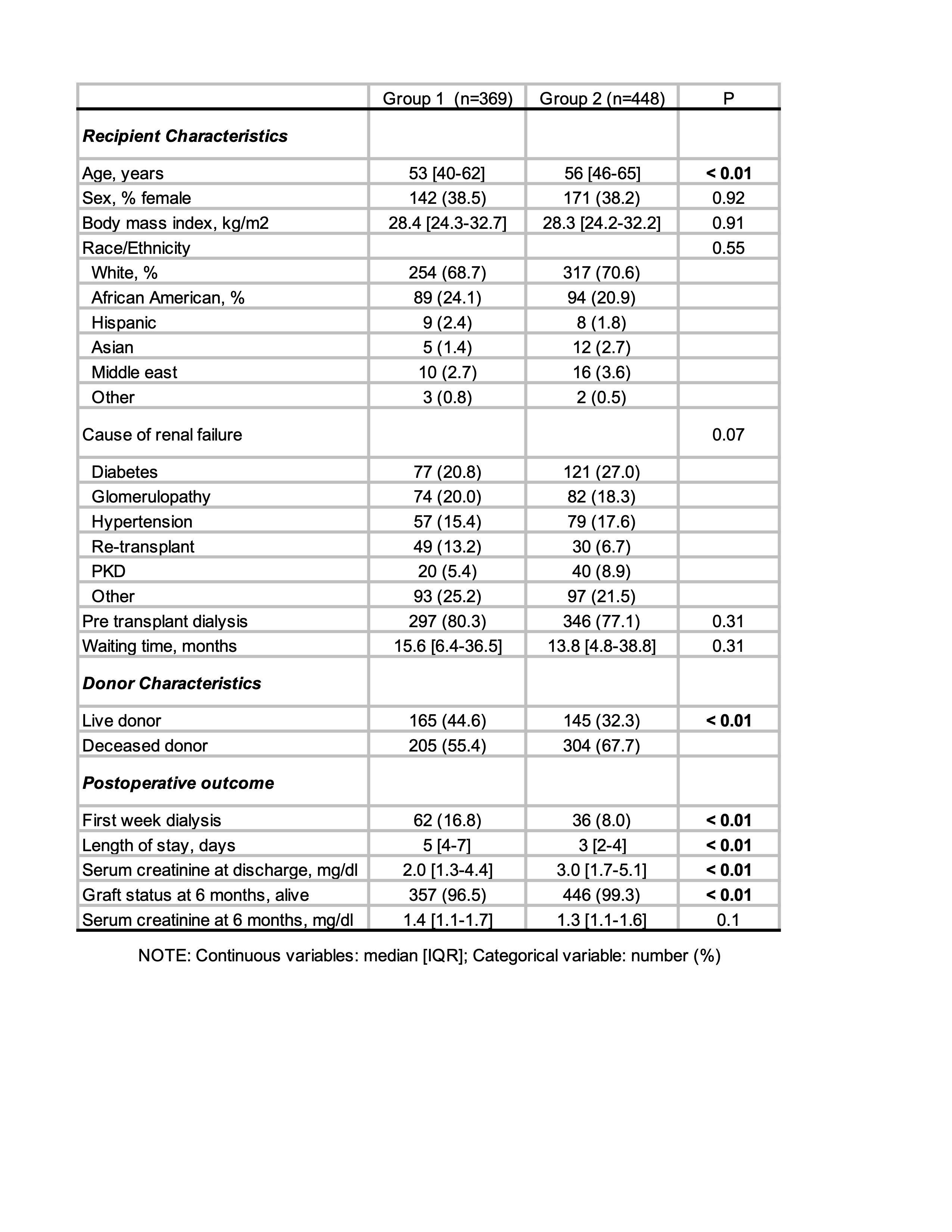Early recovery after surgery program in kidney transplantation patients: comparison of clinical outcomes with conventional care program
Mohamed Eltemamy1, Yi-Chia Lin1, Venkatesh Krishnamurthi1, David Goldfarb1, Alvin Wee1.
1Transplant Center, Cleveland Clinic, Cleveland, OH, United States
Purpose: Early recovery after surgery protocols (ERAS) has been adopted in many surgical procedures. Transplant ERAS (T-ERAS) is a peritransplant multimodal approach aimed at shortening recovery and improving outcomes. T-ERAS has been introduced into our institution since 2018 and becomes the standard of care for kidney transplantatio. We aimed to report the difference between T-ERAS and conventional pathway at our institution.
Methods: We retrospectively reviewed 817 patients who had kidney transplantation only in our department from 2015 to 2020. Patients were divided into Group 1 from 2015 to 2017 (n=369) and Group 2 from 2018 to 2020 (n=448).
Results: Patients in Group 2 were older (56 vs 53 years, p<0.01) and had less living donation (32.3% vs 44.6%, P<0.01). Patients in Group 2 had a lower rate of delayed graft function (DGF) (8% vs 16.8%, P<0.01) decreased length of stay (3 vs 5 days, P<0.01) with a higher creatinine level at discharge (3 vs 2 mg/dl, P<0.01) but similar creatinine levels (p=0.1) and better graft survival at 6 months (99.3% vs 96.5%, P<0.01).
Conclusion: The T-ERAS protocol was associated with a lower rate of DGF, decreased length of hospital stay and better graft survival at 6 months. The higher creatinine at discharge can be explained by the larger percentage of living donation in Group 1 as well as the earlier discharge.

right-click to download
